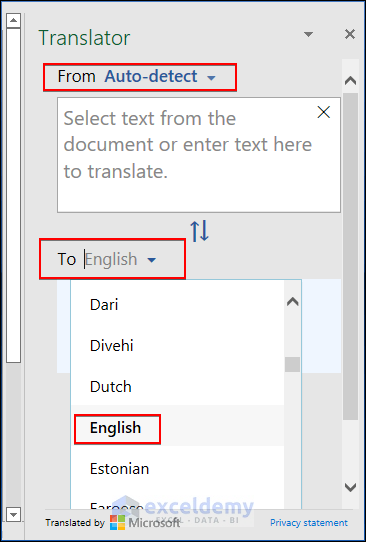How To Translate Excel Sheet From Japanese To English

Are you working with Excel spreadsheets that are originally in Japanese but need to translate them into English? If so, this guide will be immensely helpful. Translating documents from one language to another within Excel can streamline communication and data analysis across linguistic boundaries, particularly when dealing with languages like Japanese, which uses both ideograms (kanji) and two sets of syllabaries (hiragana and katakana).
Why Excel Translation is Important

Translating your Excel data from Japanese to English:
- Enhances communication with international teams or clients who do not read Japanese.
- Allows for easier data analysis and reporting when working in a globally diverse work environment.
- Facilitates automation and integration with English-based systems or software.
- Reduces errors that might occur due to misinterpretation of language or characters.

Using Excel for Translation

Excel itself does not have a built-in translation function, but there are several methods you can use to achieve translation:
1. Manual Translation

When dealing with a small amount of data, you might opt for manual translation:
- Create a duplicate sheet and translate the text manually.
- Use online dictionaries or Japanese language software to assist with translation.
2. Excel Add-Ins

There are third-party Excel add-ins designed to help translate text:
- Install a translation add-in from Microsoft Store or another trusted source.
- Select the cells or text you need translated, choose the source and target languages, and run the translation.
3. Online Translation Services

Utilize online translation tools which can be integrated with Excel:
- Use services like Google Translate or DeepL Translate to translate content from Excel to your web browser or via their APIs.
- Tools like the Google Translate API can be used through VBA scripting in Excel.
🔧 Note: When using APIs, make sure to adhere to API usage policies and consider costs if applicable.
4. VBA (Visual Basic for Applications) Scripts

For those with some programming knowledge:
- Write a VBA script to automate the translation process by connecting to online translation services.
5. External Software

Software like SDL Trados or Memsource can import and export Excel files for translation:
- Export your Excel data to these platforms, translate, and then import the translations back.

Translation Challenges

Translating Japanese to English presents some unique challenges:
- Contextual Translation: Japanese has many words and phrases that depend heavily on context for meaning.
- Phonetic Translation: Words written in katakana might be from foreign origins and can have different meanings or connotations in English.
- Cultural Nuances: Direct translation might not convey cultural nuances, idiomatic expressions, or proverbs.
🔍 Note: Professional translators or native speakers are often necessary for accurate translation of complex or culturally sensitive text.
Post-Translation Editing

After the initial translation:
- Check for grammatical accuracy and natural language flow.
- Adjust numbers, dates, and other localized formats to English standards.
- Review any formulas, ensuring they function correctly post-translation.

Integration with Other Tools

To maximize efficiency, consider integrating translation tools with other software:
- Link Excel with translation software through APIs or plugins.
- Use project management tools to coordinate translation tasks.
Wrapping Up

Translating your Excel sheets from Japanese to English can significantly enhance your business’s global operations. Whether it’s for presenting data to an international team, integrating with English-based systems, or simply ensuring accurate communication, this process, though initially complex, yields substantial benefits. Use the outlined methods—manual translation, add-ins, online services, VBA scripts, or external software—to effectively manage your translation tasks. Remember that while technology offers excellent support, human oversight ensures accuracy, especially when dealing with nuances and cultural elements that automated systems might miss.
What are the limitations of using machine translation in Excel?

+
Machine translation often fails to capture context, cultural nuances, or idiomatic expressions. It can result in literal translations that might not make sense in the target language.
How can I ensure data privacy when using online translation services?

+
Choose services with robust privacy policies. Consider localizing your translation needs or using services that ensure data confidentiality like DeepL’s Pro Plan.
Can Excel formulas and functions be affected by translation?

+
Yes, formula names and error messages might be translated, potentially causing issues with their functionality. Ensure you review and update formulas post-translation.
What is the best way to translate Excel sheets for business purposes?

+
Utilizing professional translation services or software like SDL Trados, which are specifically designed for business documents, while involving human review for context-sensitive content, is often the best practice.



